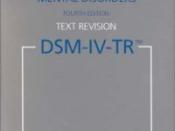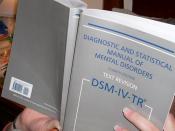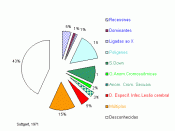The Diagnostic and Statistical Manual of Mental Disorders is the official manual used in diagnosing mental disorders. The DSM has changed considerably since it was first published in 1952. DSM-I listed a mere 66 disorders, compared to the 400 disorders listed in the current DSM-IV. DSM I and DSM II were influenced by the psychodynamic approach. The manuals suggested that all disorders were caused by environmental occurrences. The DSM-III dropped the psychodynamic view and used the medical model as the approach, by separating the normal and abnormal. DSM-V is scheduled for release in 2012.
One of the first attempts to create a manual of mental disorders was a technical bulletin issued by the U.S. Army titled "Medical 203". (1) Medical 203 used terminology created by U.S. Army Psychiatrists for diagnosis and treatment of soldiers suffering mental problems during WWII.
Objectivity QuestionedOver the decades, there have been many revisions and changes to the DSM.
In 1973 Dr. Robert Spitzer who headed the publication of the DSM dropped the classification of homosexuality as a mental disorder, for instance. Some groups have challenged this decision and think homosexuality should be re-classified as a mental illness.
Spitzer himself has changed his opinion on homosexuality after a study he conducted in 2001. In the study, Spitzer concluded that homosexuals can and do change their orientation and can become straight. "Like most psychiatrists I thought that homosexual behavior could be resisted", said Spitzer "but sexual orientation could not be changed. I now believe that's untrue-some people can and do change." (2) Spitzer concluded that the changes occurred not just in behavior but in core features of sexual orientation. Even so, it's extremely unlikely homosexuality will ever be re-listed as a mental disorder in the DSM. Homosexuality has become socially acceptable since the 36 years it was...


